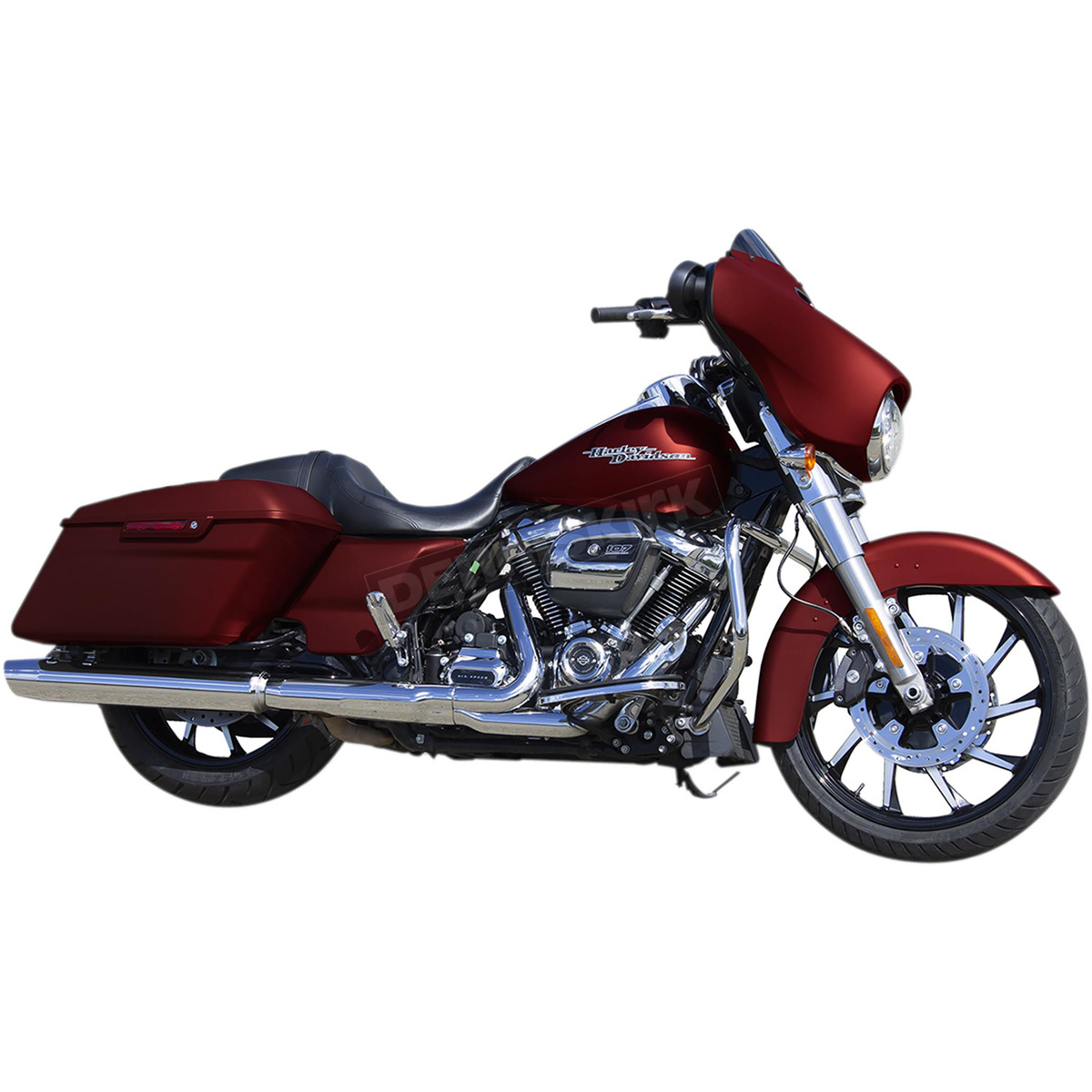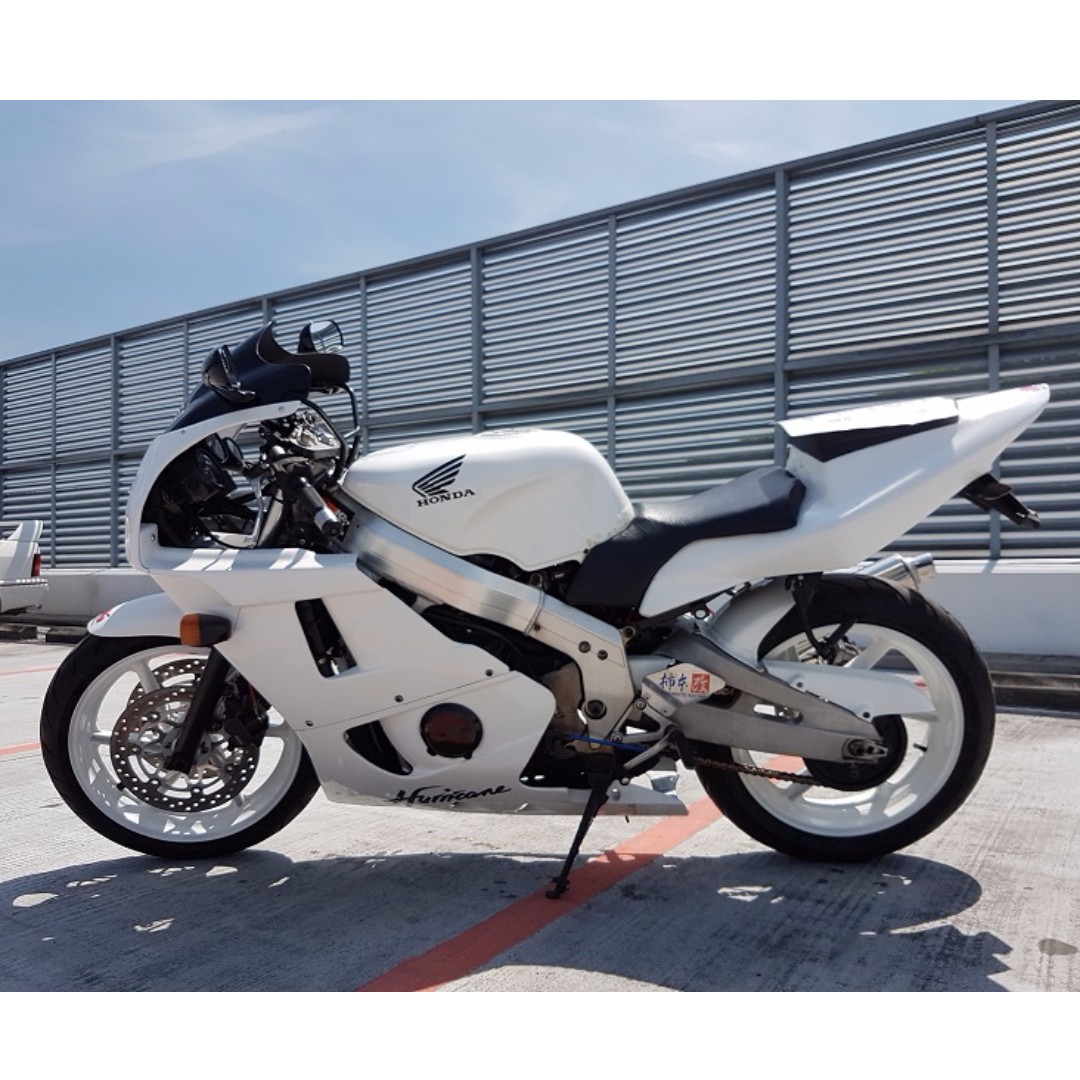Introduction to the Hurricane Motorcycle Era
In the vibrant history of biking, the Hurricane motorcycle stands out as an icon. This range, introduced by Honda in the 1980s, set a new standard for performance, design, and marketing genius. The era was marked by fierce competition among bike manufacturers, each vying to create the most potent machines. Honda’s Hurricane motorcycles were their answer to this intense rivalry, combining sleek aesthetics with raw power.

The Advent of the Honda Hurricane Models
The arrival of the Honda Hurricane models signaled a bold new direction for the brand. With the CBR600F and the CBR1000F landing on American soil in 1987, these bikes were Honda’s counter to the dominant Kawasaki and Yamaha liter bikes. Although not as well known as other models, the Hurricanes boasted advanced technology and design, establishing themselves as bikes worth remembering.
Marketing and Rivalry: The Kawasaki Ninja Challenge
Honda’s marketing of the Hurricane was direct and ambitious, targeting their chief rival – the Kawasaki Ninja – right in its tracks. A quintessential 80s commercial painted the Hurricane as a looming storm about to hit the Ninja hard. The Hurricane motorcycle’s entry was not just about performance; it was also a statement in the market to shake up the status quo. While it is debatable how much this rattled Kawasaki, the Hurricane definitely made a splash and set a new pace in the world of racing and street-riding bikes.
Technical Breakthroughs of the Honda Hurricane
The Powerhouse: CBR1000F’s Engine and Performance
The Honda Hurricane is a benchmark in motorcycle engineering. The launch of the CBR1000F, also known as the Hurricane, showcased an engine that was a marvel for its time. The bike featured a 998cc inline-four engine. This power unit was liquid-cooled and utilized a carburetor. It delivered a remarkable 132 horsepower. In the 1980s, these figures set new highs in engine prowess for production bikes. With this engine, the Hurricane pushed boundaries. It offered riders a blend of adrenaline-pumping speed and reliable performance for daily travel.
The design of the CBR1000F’s engine was such that updates were rarely needed. Its robust construction and power output remained unmatched for years. Due to this, the engine stayed mostly the same throughout the motorcycle’s time in the US market.
Advancements in Speed: Setting New Records
In terms of speed, the Hurricane soared. The CBR1000F achieved a top speed of 164 miles per hour. This incredible feat made it the fastest production motorcycle of its era. For a while, no other bike could claim superiority in terms of raw speed. It wasn’t just quick in a straight line, though. Its performance in speed reflected a new era where bikers expected more from their machines. They wanted speed with control and precision.
The Hurricane motorcycle set new standards. It challenged its contemporaries on the track and on the road. Its top speed record heralded Honda’s foray into a new domain of bike racing and sport touring. To this day, the Hurricane’s influence is felt in the designs and capabilities of modern motorcycles.
Design and Aesthetics of the Hurricane Series
When Honda unleashed the Hurricane, it wasn’t just setting benchmarks in speed and power. The design and aesthetics were a key part of the Hurricane’s appeal. The series featured modern and aggressive styling, a step ahead of its 1980s peers. The sleek bodywork, streamlined fairings, and bold graphics underscored the Hurricane’s position as a bike that meant business.
Styling Evolution and Color Schemes
The Hurricane’s look evolved from its first introduction to the final models. Early bikes sported sharp lines and a futuristic look that captured the spirit of the decade. As the series matured, the motorcycles showcased smoother profiles and updated color palettes. The bikes were available in a range of color schemes, each designed to highlight the Hurricane’s aggressive character. Some included vibrant reds and blues, while others featured more subdued hues, adding to the bike’s widespread appeal.
Sport-Touring Comfort and Riding Position
Yet, the Hurricane’s design wasn’t all about looks; it was also tailored for rider comfort. The series famously combined the ergonomics of a sport-touring bike with the adrenaline rush of a racer. The seating position struck a balance between aggressive and relaxed, thus allowing for both spirited rides and longer tours without fatigue. Riders raved about its comfortable saddle and sensible handlebar layout, which reduced strain on long journeys.
With its compelling combination of cutting-edge looks, diverse color options, and a thoughtfully designed riding position, the Hurricane series carved out a niche that blurred the lines between a pure racer and a long-distance tourer. This adaptation made the Hurricane a beloved model and beckoned riders who sought the thrills of speed without compromising on comfort.
 Impact on the Motorcycle Market and Honda’s Legacy
Impact on the Motorcycle Market and Honda’s Legacy
The Hurricane motorcycle series reshaped the market. It left a footprint on Honda’s brand identity. The bikes offered a new vision of speed and versatility. These bikes reflected Honda’s commitment to innovation and competition.
The Hurricane’s Competitive Edge
The Hurricane series brought a competitive edge to Honda. With the CBR1000F leading the charge, it set high benchmarks. Its engine performance and speed intimidated rivals. As a result, Honda gained prestige in the motorcycle industry. The Hurricane showcased a perfect blend of power and agility. This blend appealed to riders seeking performance and reliability.
Lasting Influence on Sport-Touring Motorcycles
The Hurricane’s design set a lasting trend in sport-touring motorcycles. Its comfortable riding position offered long-distance capability. This feature bridged the gap between racing and touring bikes. Modern motorcycles still echo the Hurricane’s dual character. The series hinted at the future of motorcycles being both swift and comfortable for lengthy rides. Its legacy continues to impact the design of current sport-touring models. Honda’s approach to sport-touring bikes remains influential. The brand consistently produces machines that honor the Hurricane’s spirit.
The Hurricane’s Place in Motorcycle Culture
The Hurricane motorcycle carved out its own niche in biker hearts. As the roaring 80s drew to a close, the Hurricane series left an indelible mark on the culture. Its unmatched speed and styling made it more than a mere bike; it became a symbol. For many riders, the Hurricane defined an era of innovation and fierce competition. It pushed the boundaries of what was possible on two wheels.
The Hurricane’s Reputation Among Riders and Enthusiasts
Among riders and enthusiasts, the Hurricane enjoys a storied reputation. Known for its impressive speed and powerful engine, it became a favorite for those seeking thrills. Yet, it wasn’t just about speed; the Hurricane was also praised for its versatility. Capable of both racing aggression and touring comfort, it attracted a wide range of fans. Today, discussions about vintage Honda bikes often highlight the Hurricane’s prowess and influence.
The Rarity of the CBR1000F Today
The CBR1000F, the pinnacle of the Hurricane series, is now a rare find. Its distinctive presence at bike shows turns heads and sparks conversations among aficionados. As models have come and gone, the CBR1000F has achieved a sort of cult status. Finding one in good condition is a treat for collectors and Honda enthusiasts. The rarity of the CBR1000F today only adds to its mystique and continues to fuel its legend in motorcycle culture.
 Closing Remarks
Closing Remarks
As we conclude our journey through the Hurricane motorcycle’s vibrant legacy, we reflect on its undeniable impact.
Reflections on the Hurricane Motorcycle’s Historical Significance
The Hurricane motorcycle marked a defining moment in bike history. With its introduction, Honda rewrote the rules of speed and design. The CBR1000F, known for its roaring power and sleek lines, remains a testament to the era’s boldness. Kawasaki and Yamaha faced a formidable challenger that pushed the limits on performance and aesthetics.
The Hurricane’s sophisticated engineering and the 132 horsepower of its 998cc engine set a new standard. Riders experienced a machine that married speed with daily reliability. Its record-breaking top speed of 164 miles per hour made it a legend among motorcycles of the time.
Yet, its legacy lives beyond raw power. The Hurricane blended the excitement of race bikes with the comfort of tourers. Its sport-touring design set a precedent, influencing future bike models across brands.
Today, the Hurricane motorcycles, especially the rare CBR1000F, are more than just vehicles. They’re emblems of a bygone era, embodying innovation and a spirit of competition. For enthusiasts and riders alike, the Hurricane motorcycle represents an iconic chapter in the story of biking — one that continues to inspire and excite.
